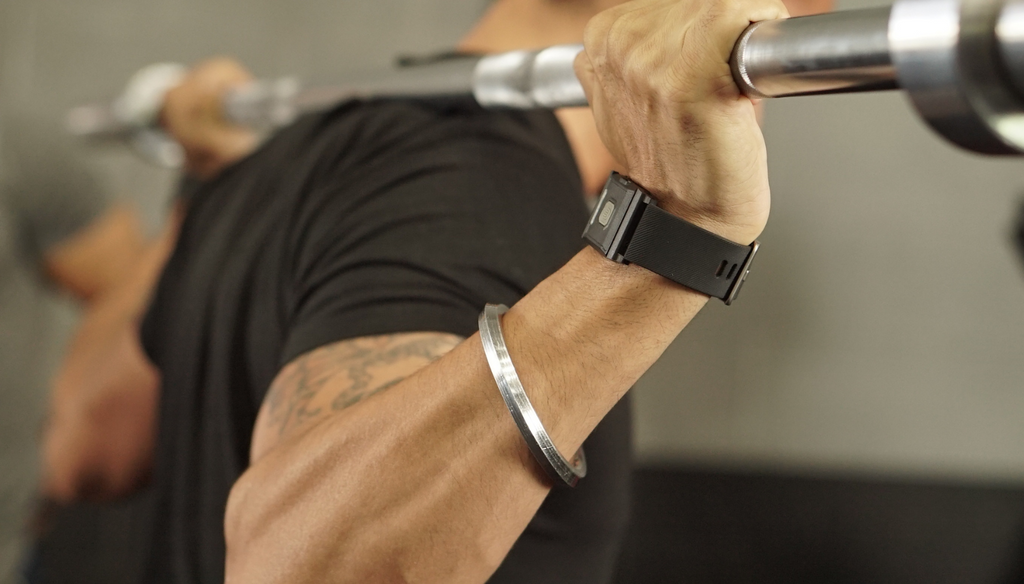Personalized Performance: Customizing Strength Training with Smart Wearables

The evolution of fitness and exercise has come a long way. Not so long ago, personal training and structured routines were luxuries affordable to a select few.
Today, we find ourselves in an era where the democratization of fitness has been catalyzed by technological advancements, bringing personalized strength training within the reach of everyone. This has largely been made possible due to the integration of smart wearables into the fitness ecosystem.
Why Personalized Training Matters in Strength Building
As one of the six dimensions of health, exercise is crucial for our well-being. There are different types of exercises you can do depending on your goals, and one of the most important is strength training.
The cornerstone of effective strength-building is personalized training. Each individual's unique combination of physiological attributes, fitness levels, body composition, aspirations, and constraints should inform the design of their training routines. This personalization breeds not only safety but also attainability in the pursuit of fitness objectives, providing a more efficient path to results.
In the arena of strength training, the value of customized plans cannot be overstated. Such plans are rooted in an individual’s starting strength, monitoring progress over time. The magic of personalization lies in its adaptability - adjustments to exercise intensity, volume, and type are made based on tracked progression, promoting continual growth and helping avoid stagnation.
To accomplish truly personalized training, constant evaluation and tracking of individual performance and progression are needed. This is where smart wearables prove their mettle, providing the tools needed to capture this valuable data, thus enabling a personalized approach to strength training.
The Role of Smart Wearables
In understanding smart wearables, it's key to acknowledge their evolution. These digital devices, worn on the body, have come a long way from their inception as simple pedometers. Over the years, technological advancements have transformed them into sophisticated fitness companions that can track an impressive range of parameters related to physical activity.
They've progressed from merely counting steps to monitoring heart rate, calories burned, sleep
quality, VO2 max, and even stress levels, painting a comprehensive picture of an individual's overall health and fitness status.
At their core, smart wearables are an integration of numerous sensors and technologies, each designed to capture specific data. Heart rate sensors, accelerometers, gyroscopes, GPS, bioimpedance sensors, and even UV sensors are some of the common components found in these devices.
Once the data is captured, it's processed by advanced algorithms that translate raw inputs into meaningful, actionable insights. The complexity of these algorithms has increased in tandem with the devices themselves, allowing for an ever-more nuanced understanding of the user's health and fitness.
Smart wearables have emerged as invaluable companions in fitness. From physical rehabilitation to mental well-being, these advanced tools have crucial roles. They can monitor the intensity and volume of workouts, helping individuals strike a balance between effort and overtraining.
Furthermore, their ability to track recovery - by assessing parameters like heart rate variability (HRV) and sleep quality - provides insights into when the body is ready for the next workout or when it needs more rest.
In addition, smart wearables can analyze form during strength training exercises. By using motion sensors and advanced algorithms, they can provide real-time feedback on the execution of various movements. This can help optimize performance, ensure the right muscle groups are being engaged, and significantly reduce the risk of injury.
By combining the ability to track a wide range of fitness parameters with advanced analytics, smart wearables offer a personalized approach to strength training, leading to more effective workouts and better results.
How Smart Wearables Enhance Strength Training
Strength training is no longer about blindly following a set of exercises. It's about understanding your body's responses and adapting your workouts for maximum benefit. This is where smart wearables come into play. They are like personal trainers on your wrist, guiding you through your fitness journey with data-driven insights.
Smart wearables can monitor your heart rate during workouts, indicating your effort level and helping you train at the right intensity. They can track the volume of your workouts, ensuring you don't overdo it and risk injury. They also offer recovery metrics, highlighting when you need to rest and when you're ready to push hard again.
But the benefits don't end there. Some smart wearables go beyond these basic features, offering advanced functionality that can further elevate your strength training routine. For example, some can track your exercise form, providing feedback to help you execute movements correctly and efficiently. This not only minimizes the risk of injury but also ensures you're effectively targeting the intended muscle groups.
Navigating the World of Smart Wearables
The current market is flooded with a plethora of smart wearables, each boasting a unique set of features. This makes selecting the appropriate device for strength training a daunting task.
Key Features to Consider in a Smart Wearable
When choosing a smart wearable, there are several crucial factors to bear in mind. The first is tracking accuracy. A device's ability to accurately capture and record data is paramount. It's this data that informs your training adjustments, and accuracy errors can lead to ineffective workouts or even potential injuries.
Next, consider the range of metrics it measures. A device that tracks a broader array of parameters offers a more holistic view of your fitness. This can be beneficial for comprehensively understanding your performance and making informed adjustments to your strength training regimen.
Practical Considerations for a Smart Wearable
In addition to tracking capabilities and the range of metrics, there are practical aspects to consider. Battery life is a vital factor, especially for those engaged in lengthy training sessions or outdoor activities where charging may not be readily available. The device should also be durable enough to withstand the rigors of intense workouts.
The device's user interface should be intuitive and easy to navigate. It should offer clear and actionable insights, translating complex data into understandable metrics that can inform your training decisions. Compatibility with your smartphone or computer and integration with other fitness apps can further enhance its utility.
Lastly, it's important to consider how well the device integrates with your lifestyle. If it's cumbersome or uncomfortable, you're less likely to wear it consistently. Look for a device that suits your style and comfort to ensure you're able to harness its full potential in your strength training journey.
On a related note, while investing in a smart wearable, you might also be looking for ways to optimize other aspects of your strength training regimen. One area that often involves considerable investment is nutrition. But there are ways of saving money on nutrition for strength athletes without compromising the quality of your diet. Just as smart wearables offer an effective solution for personalized training, smart shopping, and planning can make your nutritional investments go a long way in supporting your strength training goals.
How TouchPoint Solution Can Help
While there are plenty of options, one you might want to look at is TouchPoint. From wrists to socks, the company’s smart wearable can be worn in different ways. It uses gentle and alternating vibrations to retrain the body's stress response at the gym. It can improve sleep, reduce stress, and regain focus. All these things can help improve your physical performance.
Most wearables in the realm of fitness focus on monitoring to help gauge and improve performance. TouchPoint, on the other hand, changes your body by fighting stress and enhancing focus, among others.
Conclusion

Smart wearables are truly transforming the landscape of strength training, enabling levels of personalization previously unimaginable. By providing a wealth of actionable insights right at our fingertips, these devices are empowering us to take control of our fitness journeys and drive towards our goals with unprecedented precision.
As the future unfolds, the integration of smart wearables into our fitness routines is set to become more intuitive, making strength training an even more personalized, efficient, and rewarding endeavor.




